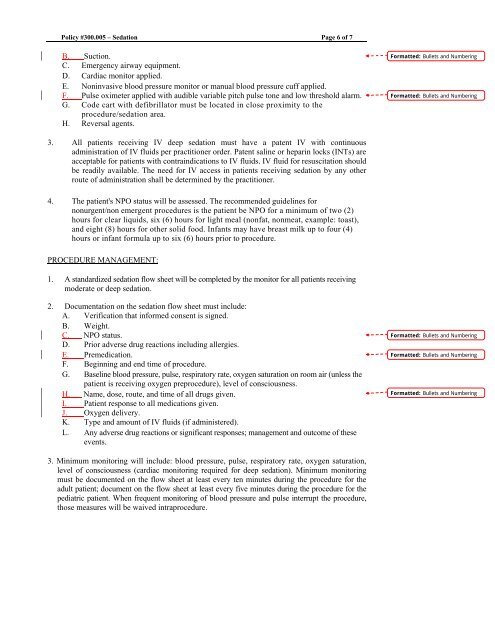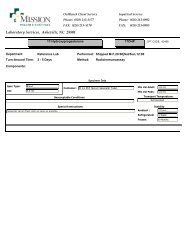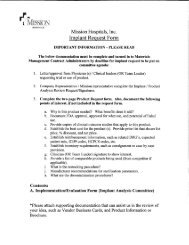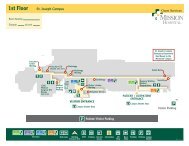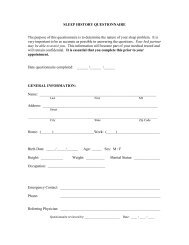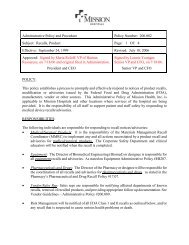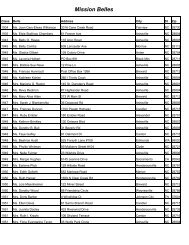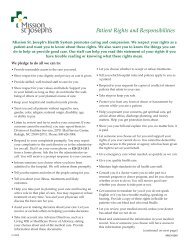PRE-SEDATION EVALUATION FORM (DRAFT) - Mission Health
PRE-SEDATION EVALUATION FORM (DRAFT) - Mission Health
PRE-SEDATION EVALUATION FORM (DRAFT) - Mission Health
Create successful ePaper yourself
Turn your PDF publications into a flip-book with our unique Google optimized e-Paper software.
Policy #300.005 – Sedation Page 6 of 7B. Suction.C. Emergency airway equipment.D. Cardiac monitor applied.E. Noninvasive blood pressure monitor or manual blood pressure cuff applied.F. Pulse oximeter applied with audible variable pitch pulse tone and low threshold alarm.G. Code cart with defibrillator must be located in close proximity to theprocedure/sedation area.H. Reversal agents.Formatted: Bullets and NumberingFormatted: Bullets and Numbering3. All patients receiving IV deep sedation must have a patent IV with continuousadministration of IV fluids per practitioner order. Patent saline or heparin locks (INTs) areacceptable for patients with contraindications to IV fluids. IV fluid for resuscitation shouldbe readily available. The need for IV access in patients receiving sedation by any otherroute of administration shall be determined by the practitioner.4. The patient's NPO status will be assessed. The recommended guidelines fornonurgent/non emergent procedures is the patient be NPO for a minimum of two (2)hours for clear liquids, six (6) hours for light meal (nonfat, nonmeat, example: toast),and eight (8) hours for other solid food. Infants may have breast milk up to four (4)hours or infant formula up to six (6) hours prior to procedure.PROCEDURE MANAGEMENT:1. A standardized sedation flow sheet will be completed by the monitor for all patients receivingmoderate or deep sedation.2. Documentation on the sedation flow sheet must include:A. Verification that informed consent is signed.B. Weight.C. NPO status.D. Prior adverse drug reactions including allergies.E. Premedication.F. Beginning and end time of procedure.G. Baseline blood pressure, pulse, respiratory rate, oxygen saturation on room air (unless thepatient is receiving oxygen preprocedure), level of consciousness.H. Name, dose, route, and time of all drugs given.I. Patient response to all medications given.J. Oxygen delivery.K. Type and amount of IV fluids (if administered).L. Any adverse drug reactions or significant responses; management and outcome of theseevents.Formatted: Bullets and NumberingFormatted: Bullets and NumberingFormatted: Bullets and Numbering3. Minimum monitoring will include: blood pressure, pulse, respiratory rate, oxygen saturation,level of consciousness (cardiac monitoring required for deep sedation). Minimum monitoringmust be documented on the flow sheet at least every ten minutes during the procedure for theadult patient; document on the flow sheet at least every five minutes during the procedure for thepediatric patient. When frequent monitoring of blood pressure and pulse interrupt the procedure,those measures will be waived intraprocedure.


